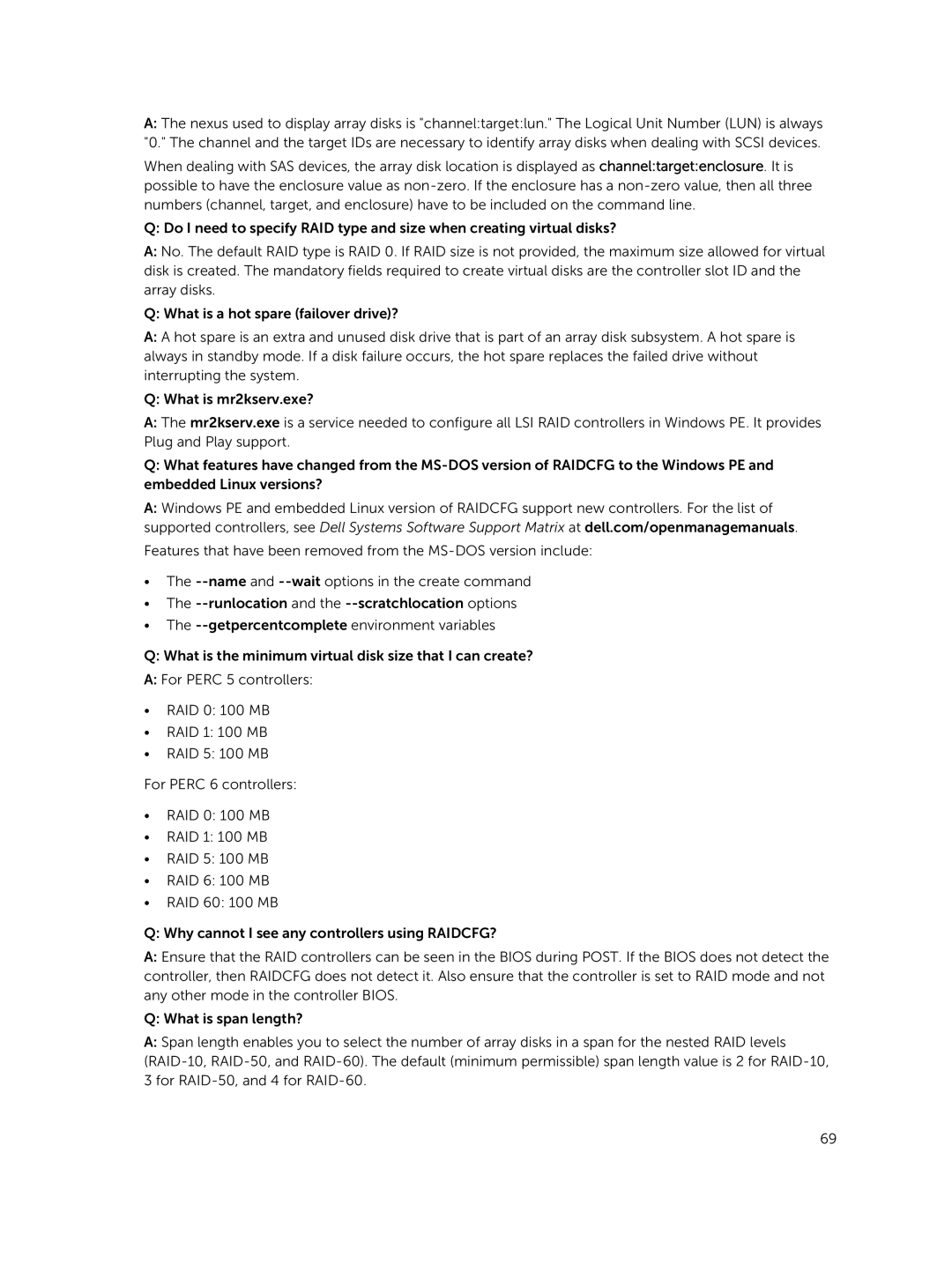A:The nexus used to display array disks is "channel:target:lun." The Logical Unit Number (LUN) is always "0." The channel and the target IDs are necessary to identify array disks when dealing with SCSI devices.
When dealing with SAS devices, the array disk location is displayed as channel:target:enclosure. It is possible to have the enclosure value as
Q: Do I need to specify RAID type and size when creating virtual disks?
A:No. The default RAID type is RAID 0. If RAID size is not provided, the maximum size allowed for virtual disk is created. The mandatory fields required to create virtual disks are the controller slot ID and the array disks.
Q:What is a hot spare (failover drive)?
A:A hot spare is an extra and unused disk drive that is part of an array disk subsystem. A hot spare is always in standby mode. If a disk failure occurs, the hot spare replaces the failed drive without interrupting the system.
Q:What is mr2kserv.exe?
A:The mr2kserv.exe is a service needed to configure all LSI RAID controllers in Windows PE. It provides Plug and Play support.
Q:What features have changed from the
A:Windows PE and embedded Linux version of RAIDCFG support new controllers. For the list of supported controllers, see Dell Systems Software Support Matrix at dell.com/openmanagemanuals. Features that have been removed from the
•The
•The
•The
Q:What is the minimum virtual disk size that I can create?
A:For PERC 5 controllers:
•RAID 0: 100 MB
•RAID 1: 100 MB
•RAID 5: 100 MB
For PERC 6 controllers:
•RAID 0: 100 MB
•RAID 1: 100 MB
•RAID 5: 100 MB
•RAID 6: 100 MB
•RAID 60: 100 MB
Q: Why cannot I see any controllers using RAIDCFG?
A:Ensure that the RAID controllers can be seen in the BIOS during POST. If the BIOS does not detect the controller, then RAIDCFG does not detect it. Also ensure that the controller is set to RAID mode and not any other mode in the controller BIOS.
Q:What is span length?
A:Span length enables you to select the number of array disks in a span for the nested RAID levels
69
